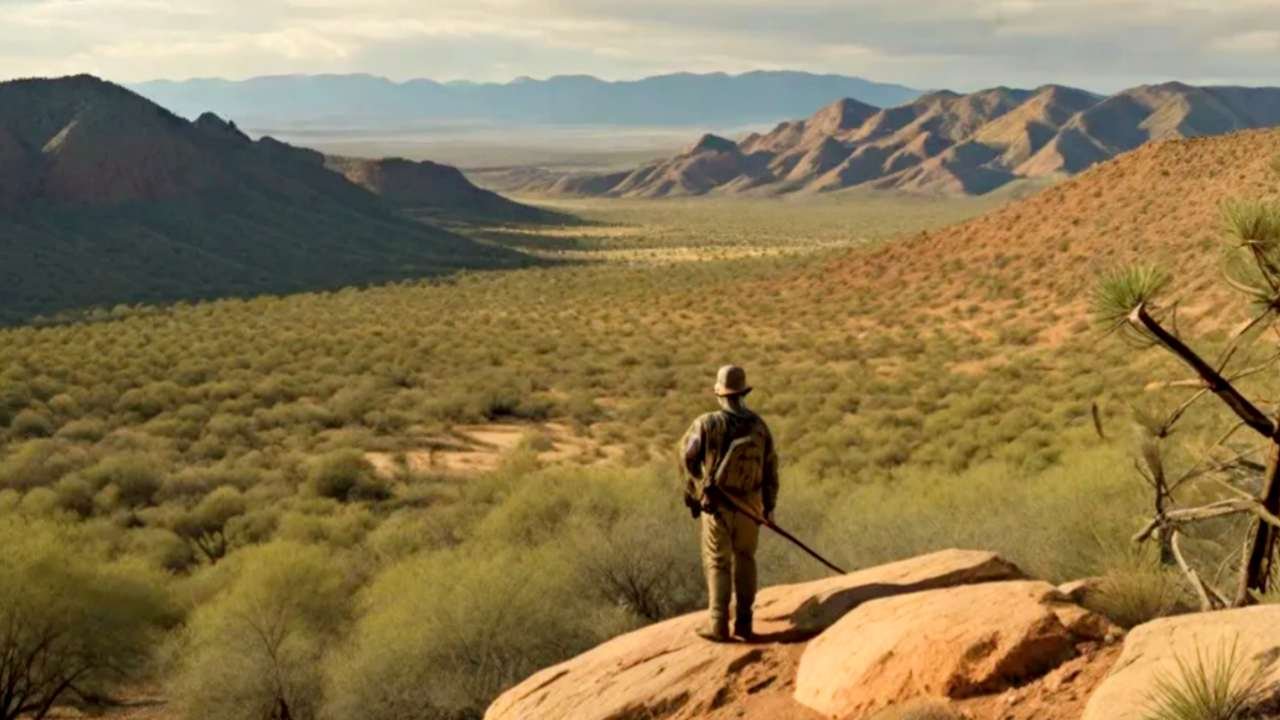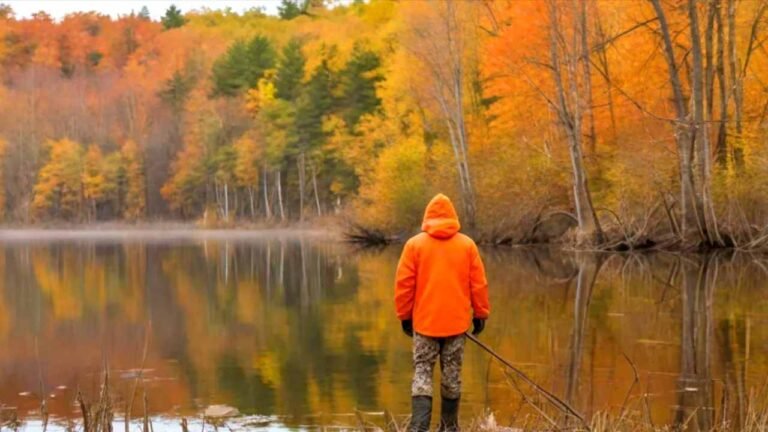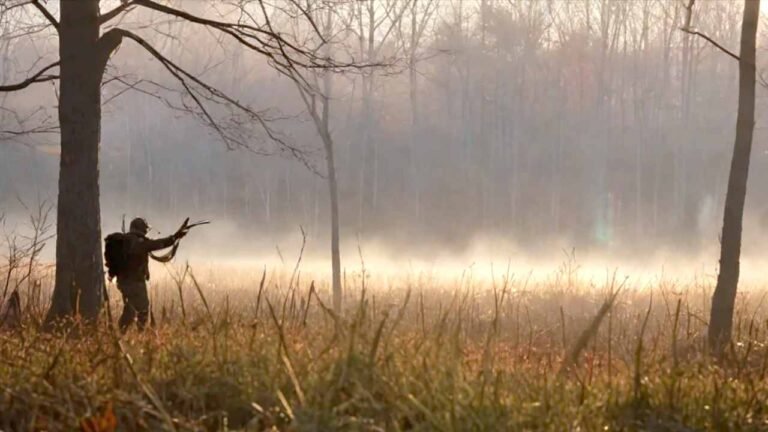Arizona Hunting Seasons 2025-2026 – Tag Deadlines, Units & Species Info
Arizona’s diverse landscapes and varied wildlife make it a premier destination for outdoor enthusiasts. From the high pine forests of the Mogollon Rim to the saguaro-dotted Sonoran Desert, the Grand Canyon State offers exceptional hunting opportunities year-round. This comprehensive guide covers everything you need to know about the 2025-2026 hunting season in Arizona, including key dates, licensing requirements, tag information, and wildlife management zones across the state.
Arizona Hunting Season Overview
Arizona’s hunting seasons are strategically designed to align with wildlife populations and conservation goals. The Arizona Game and Fish Department (AZGFD) manages these seasons carefully to ensure sustainable wildlife management while providing excellent sporting opportunities for hunters of all experience levels.
🎯 Quick Reference: Key Species & Dates
| Species | Method | Season Opens | Season Closes | Tag Type |
|---|---|---|---|---|
| Deer | Archery OTC | Aug 22, 2025 | Jan 31, 2026 | Nonpermit |
| Deer | General Draw | Oct 24, 2025 | Dec 31, 2025 | Permit-tag |
| Turkey | General | Oct 3, 2025 | Oct 13, 2025 | Permit-tag |
| Javelina | General Draw | Oct 3, 2025 | Nov 27, 2025 | Permit-tag |
| Bear | General | Aug 8, 2025 | Dec 31, 2025 | Nonpermit |
| Mountain Lion | Statewide | Aug 22, 2025 | May 31, 2026 | Nonpermit |
| Quail | All Methods | Oct 17, 2025 | Feb 8, 2026 | None Required |
🦌 Big Game: Archery & Rifle Opportunities
Mule Deer & Coues Whitetail
Arizona’s deer populations offer both desert dwellers and mountain varieties. General firearm opportunities run from October 24 through December 31, with specific dates varying by unit. Youth-only options start as early as October 3, giving young hunters a head start.
Archery enthusiasts can take advantage of over-the-counter tags during three separate windows: August 22 – September 11, December 12 – December 31, and January 1 – January 31. These nonpermit-tag opportunities don’t require entering the draw system but are limited to specific units.
Tag Requirements: Most general opportunities require permit-tags through the draw system. Resident deer tags cost $58, while non-residents pay $315. Application fees add $13 for residents and $15 for non-residents.
Javelina (Desert Peccary)
These desert natives provide excellent opportunities from October through November. General and youth-only draws typically run October 3 – October 12, with some later options extending to November 27.
Year-round OTC options are available in select zones for both general and archery methods. These nonpermit-tag opportunities run January 1 – December 31, making javelina one of the most accessible big game species.
Bear & Mountain Lion
Black bear opportunities span August 8 through December 31, with archery-only options beginning August 22. Mountain lions offer the longest window, running August 22, 2025 through May 31, 2026 statewide (excluding certain closed units).
Important: Both species require nonpermit-tags purchased at license dealers, plus mandatory reporting and physical inspection within 48 hours of harvest.
🦃 Turkey Adventures: Spring & Fall Options
Arizona’s three turkey subspecies – Merriam’s, Gould’s, and Rio Grande – provide diverse experiences across elevation zones.
General shotgun opportunities run October 3 – October 9 across most units, while youth-only options extend through October 13. Some units offer later youth opportunities from October 10 – October 16.
Archery-only permit-tag restricted areas open August 29 – September 11, while archery nonpermit-tag zones run August 22 – September 11. These early archery opportunities coincide with pre-roost activity patterns.
Tag fees run $38 for residents and $105 for non-residents, with most opportunities requiring draw entries.
🐾 Furbearers & Predators
Arizona offers year-round predator control with generous bag limits. Coyote, fox, bobcat, skunk, raccoon, badger, ringtail, and weasel can be taken July 1, 2025 through June 30, 2026 during daylight hours.
Trapping opportunities for bobcat, fox, ringtail, weasel, and badger run August 1, 2025 through March 31, 2026. Trappers need a separate trapping license, and bobcat pelts require sealing for export.
No tags are required for most furbearers, though bobcat exports need proper documentation.
🐦 Small Game & Upland Birds
Quail Species
Arizona hosts four quail species with varying opportunities:
- Gambel’s, Scaled, and California Quail: October 17, 2025 – February 8, 2026
- Mearns’ Quail: December 5, 2025 – February 8, 2026
Other Upland Species
- Chukar: September 1, 2025 – February 8, 2026
- Dusky Grouse: September 1 – November 9, 2025
- Pheasant: Unit 40B shotgun (September 1 – September 15), Archery statewide (October 17, 2025 – February 8, 2026)
Small Game Mammals
- Tree Squirrel: October 3, 2025 – January 31, 2026 (most units)
- Cottontail Rabbit: July 1, 2025 – June 30, 2026 statewide
No tags required for small game species, just a valid license.
🦆 Waterfowl & Migratory Birds
Sandhill Crane opportunities require permit-tags through the draw system, with 3-day periods running November 21, 2025 through January 26, 2026. These premier waterfowl opportunities fill quickly and require both state ($43 resident/$45 non-resident) and federal stamps.
Duck, goose, and other waterfowl dates aren’t included in the main regulations booklet. Hunters need the separate migratory bird supplement plus federal and state migratory bird stamps ($5 state, $25 federal duck stamp).
🗺️ Arizona Hunting Zones Map
Arizona is divided into Game Management Units (GMUs) to effectively manage wildlife populations. These units have specific regulations, season dates, and tag availability.
For detailed maps of Arizona’s hunting zones and unit boundaries, visit the Arizona Game and Fish Department’s website.
Key hunting regions include:
- Northern Arizona: Units 1-13
- Central Arizona: Units 17-24
- Eastern Arizona: Units 27-28
- Southern Arizona: Units 29-46
🎟️ License Details and Requirements
All hunters in Arizona must possess the appropriate licenses and permits.
Resident License Fees:
- General Hunting License: $37
- Combination Hunt/Fish License: $57
- Youth Combination Hunt/Fish License (ages 10-17): $5
Non-Resident License Fees:
- General Hunting License: Not available
- Combination Hunt/Fish License: $160
- Youth Combination Hunt/Fish License (ages 10-17): $5
Additional Permits and Tags:
- Big game tags require additional fees (varies by species)
- Migratory Bird Stamp: Required for dove, band-tailed pigeon, and waterfowl
- Federal Duck Stamp: Required for waterfowl hunting
Licenses are valid for 365 days from the date of purchase and are available online through the Arizona Game and Fish Department.
❓ Frequently Asked Questions
How does the tag draw system work in Arizona?
Arizona uses a weighted point system for tag allocation. You accumulate bonus points for unsuccessful applications, increasing your chances in future draws. There are three separate application periods: February for elk/antelope, June for deer/sheep/bison, and October for spring turkey/javelina.
Can I hunt on public lands in Arizona?
Yes, Arizona has abundant public hunting land, including National Forests, BLM land, and State Trust land. State Trust land requires a separate permit ($15 for individuals, $20 for families).
Is night hunting allowed in Arizona?
Night hunting is generally prohibited for most species. Limited exceptions exist for certain predators with proper permits.
Do I need hunter education in Arizona?
Hunter education is required for anyone born after January 1, 1980, who wants to hunt in Arizona. The course can be completed online followed by a field day component.
Can non-residents apply for all hunts?
Yes, but Arizona reserves 10% of all draw tags for non-residents, with 90% allocated to residents.
Related Hunting Resources
Looking for more hunting information? Check out these helpful resources:
Prepare for Your Arizona Hunt
Arizona’s diverse landscapes offer some of the most rewarding hunting experiences in the Southwest. From trophy elk in the high country to challenging Coues deer hunts in the desert mountains, the state provides exceptional opportunities for hunters of all skill levels.
Remember to carefully review the specific regulations for your target species and hunting unit before heading out. Verify season dates, tag requirements, and legal methods of take. The Arizona Game and Fish Department updates regulations annually, so always check for the latest information.
Whether you’re pursuing bugling elk in the ponderosa pines, stalking desert mule deer, or enjoying the action of a fast-paced quail hunt, Arizona’s hunting traditions and abundant wildlife make it a premier destination for sportsmen and women. Get your licenses early, apply for draws on time, and enjoy the remarkable outdoor heritage the Grand Canyon State has to offer.







